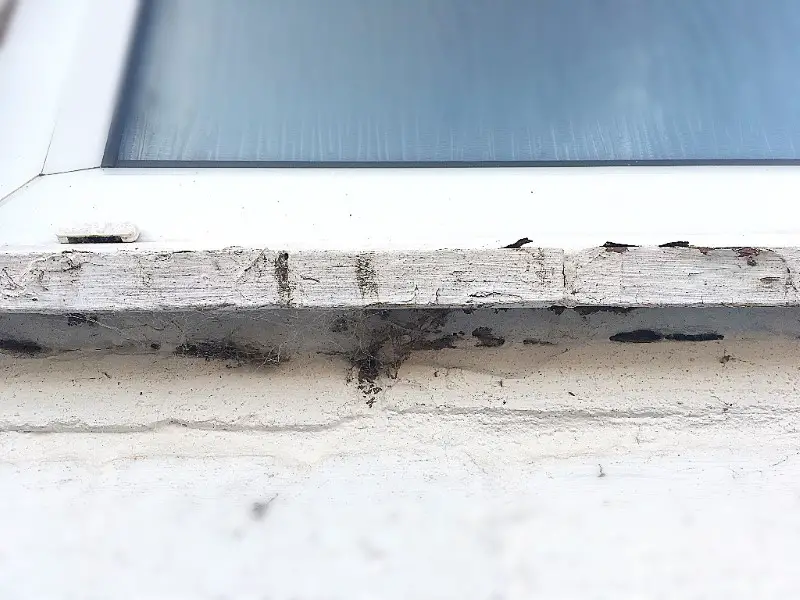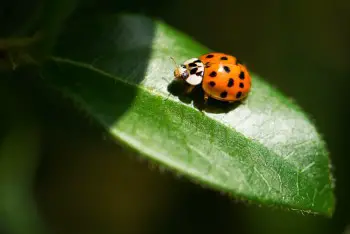I’ve always been fascinated with ladybugs. There’s just something so simple about how they go about their daily business, and yet, their journey is a complicated one with a number of radically different life stages that almost rival that of the butterfly.
We all (generally) love the look of Ladybugs, but we don’t all know the interesting things about them.
So I’m going to explain another aspect here…
Do Ladybugs Like Light? Or Dark? Generally speaking. Ladybugs cannot see in color, it’s more about lighter shades such as lighter-shaded flowers, white house walls, etc. But other factors like food and pheromones will also attract them to these areas. And not necessarily the lighter areas.
Here’s what things attract Ladybugs, and why.
If you shine a light on a Ladybird, she (or he) will likely fly toward it believing it to be the sun, and therefore a source of warmth. It seems that through their hibernation habits and daily routines there are certain times in which they move toward lighter areas. Giving the impression they must like the light. So why is this?
Ladybug Eyesight
Although the Ladybug has two fully formed and functioning eyes, set in a compound pattern, meaning they have an extensive …almost all-round vision – they’re not actually able to see as well as you may think, unless up close. But, they can certainly spot a juicy aphid from 12 inches away!
Ladybugs are not blind, but it could certainly be a ‘blurry’ world they live in. Also, they cannot see colors at all. They can only see in shades of grey, or nearer to black and white.
The picture below looks something closer to how a ladybug might see compared with how we see. As with most compound eye structures, you might also find more of a fish-eye lens view than I’ve shown below.

This image is just to give you a flavor. Other senses like scent and touch play a much more important part in the Ladybird’s daily world…
Ladybugs and Light
You would be forgiven for thinking that – especially during winter months, Ladybugs seem to be attracted to your light-filled home. This could understandably give you the impression that they prefer the light.
In terms of day and night, yes Ladybugs are active during the day. But that’s because they’re not particularly nocturnal creatures. They can simply more readily find food and water during daylight hours.
In fact, the likelihood is that your home is attractive more so for other reasons. Here are the main ones I’ve outlined below…
Ladybugs Are Attracted by Warmth
Particularly in Winter, hibernation season is approaching for Ladybugs and they need to find somewhere warm to spend the winter. Ladybirds are Ectothermic, meaning they are cold-blooded and rely on external sources of heat to keep them warm.

Did You Know…
Ladybugs cannot fly when temperatures are below 55 °F (13°C)
Show me more Facts About Ladybugs
During their search, they’ll often find cracks in windows and door spaces and, upon realizing that there appears to be warmth emitting from that area, they move within the cavities in between. Exploring even further could mean they may then get into your home.
Ladybugs Are Attracted by Pheromones
Ladybugs will always seek a warm and relatively dry place to rest, even more so when looking to hibernate during the winter months. This is particularly true of the Hippodamia convergent varieties, mostly found in North America, who gather (appearing to swarm) in large communities.
Gathering in these large groups enables them to maintain a higher mass temperature and also allows for a greater possibility of mating!
Ladybirds can emit a strong pheromone, they do this for a couple of reasons. Firstly, it forms part of their mating process. Ladybug scent can be sensed by other ladybugs that are far as a ¼ of a mile away. This enables them to more easily attract a mate.
Secondly, they will emit this pheromone as a call to other Ladybirds. If a Ladybug finds a warm place to hibernate over winter, then it will send out this message to others. Upon smelling the pheromone, a ladybug will instinctively move toward it.
‘Ladybugs attract more Ladybugs’
As a result, one Ladybug …finding a great place to camp for winter, can soon summon many more to share the spoils. Potentially developing into what can become a swarming nest of – well, sometimes hundreds of Ladybugs.

What Does It Mean If You Dream About Ladybugs?
Find Out Here
How to Stop Ladybugs Entering Your Home
If Ladybugs are invading your home, then I guess one could say make sure you have a dark-colored house! But I don’t think that would necessarily be the answer.
Seriously though, lighter-colored houses are attractive to Ladybugs partly because of the lighter color, but also because they reflect heat better than dark surfaces and it’s this heat that Ladybugs also desire.
There are things you can do to discourage Ladybugs from getting a foothold on your property! You can read my more comprehensive post on getting rid of ladybugs here.
Here’s the list in brief, then I’ll explain it in more detail below…
- Ensure all access points are closed. Windows, Doors, Pipes, Clapboards
- Use Fly Screens and minimize opening windows, particularly as Winter approaches
- Reduce any foliage near doors and windows
- Remove debris from around doors and windows
- Spray Mint Oil or Menthol – non-toxic varieties.
- Remove any ladybugs you see in your house as soon as possible
- Add Ladybug Boxes to the walls or fences outside, with any luck, they’ll use those instead
1. Ensure All Access Points Are Closed
You can employ an extermination company to ensure your home is shored up to protect against possible Ladybugs (and other infestations).
This is called Inclusion, but it can be a costly job. It is better if you can take preventative measures in ensuring your house is safeguarded in the first place.
Such as using caulk to shore up any cracks and crevices that could potentially lead into your house, so around piping, etc.
2. Use Screens and Curtains
It may of course be impractical to keep doors and windows closed all the time.
However, if you’re concerned about an infestation, then using standard fly screens and other barriers near openings can reduce the chances of Ladybirds finding and nestling in your house. It certainly reduces the chance by a good percentage.
3. Reduce Foliage near Openings
Ladybugs invariably spend much of their time near foliage if they’re still locating food and water. Having a lot of this around doorways and windows… as nice as it is can provide a greater chance of Ladybugs feeling the warmth from the house and deciding it’s a great place to hibernate.
4. Remove Debris from Around Doors and Windows
It’s likely you do this as a matter of course if you have a well-kept home.
But debris such as falling leaves and twigs, which can sometimes get caught in spider webs on window sills are a great starting point for Ladybugs to begin to gather.
Prevent Ladybirds from getting one step closer to your windows and doors by ensuring these ledges, sills and doorsteps remain free from leaves and other debris.
Particularly underneath window ledges where other beetles and insects may find refuge.

5. Spray Mint or Menthol near Openings
Regularly (or at least periodically) spraying a mild non-toxic Menthol solution or Mint oil near doors and windows.
This will deter Ladybugs from entering those spaces. It may well serve to deter other pests too. It’s possible that citronella works too but I’ve not tried it personally.
Be aware of pets and children and the need to guard against any allergic reactions. A stronger alternative and natural Ladybug pesticide are Boric Acid, (Borax). But this is strong stuff, so I’d urge caution before using it.
6. Remove Any Solitary Ladybugs
If you find a stray Ladybug in your house or room, as cute as it may look, remove it. The same too goes for removing any Ladybug Larvae you might see.
This is because one ladybug today could be many Ladybugs by the end of the month, as Ladybugs attract more Ladybugs.

So, Do Ladybugs like Dark?
Again you could be forgiven for thinking that Ladybirds like the dark. As with light, they don’t necessarily have an overriding preference for it – except that they’re active during daylight hours mostly in lighter areas, as that is when it makes sense to do so.
It’s mostly coincidence. When finding shelter or when looking to hibernate, often the warmest and driest places are those within shadows, or under shelter, out of the way of the elements.
Whether that’s a hollow log or the Eaves of your home. Or a Ladybug House, here’s one of my favorite ones on Amazon, or you can make your own Ladybug House.
Do Ladybugs Like Light – Conclusion
As lovely and cute as I think Ladybugs are, I’m certainly aware of their drawbacks to our daily lives when they turn their attention toward our homes. It is of course not their fault. They’re only doing what they’re programmed to do – since long before we came along, but with a few adjustments, we can continue to thrive alongside our Ladybug neighbors.
After all, Ladybugs are extremely important to us, so I’m pretty sure we’d all hate to see them on any endangered list.
Related Questions
Can Ladybugs See In The dark? The short answer is no, at least no more or less than you or I can. and despite having two functioning eyes, they can’t actually see in color, more in shades of grey, black and white, light or dark. Ladybugs rely more heavily on scent and touch than on vision.
What Color Are Ladybugs Attracted To? Despite having two fully functioning eyes, Ladybugs have poor eyesight. As a result, they cannot see far, and even then, they can’t see color, only shades of light or dark. They are more likely to be attracted to lighter colors when hunting for food or water and for warmth.
Hence lighter flowers attract more ladybugs. And darker colors when searching for a place to rest of hibernating, as dark areas are often drier and provide more shelter and warmth.
I hope this has helped to provide some insight into the light and shade preferences of Ladybugs. It might also have provided some insight into the habits of Ladybirds, but for a lot more details be sure to check out my other articles, such as interesting ladybug facts, my very popular Ladybug Meanings, and even my Complete guide.
If you liked this post, please feel free to share it. 🙂


